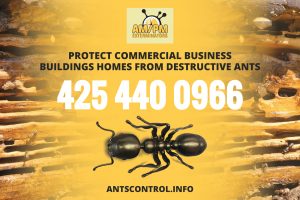Carpenter ants build their nests outdoors in various wood sources, including tree stumps, firewood or landscaping. They need a constant water source to survive. Carpenter ants will enter the house through wet, damaged wood.
Most species of carpenter ants attack wood that is currently or has previously been wet and damaged by mold. Even though carpenter ants first invade wet, decayed wood, they may later begin excavating tunnels through dry, undamaged wood. They usually come into buildings through cracks around doors, windows, or through plumbing and electrical penetrations in the home. They will also crawl along overhead wires, shrubs, or tree limbs outdoors that touch the building above ground, then enter the home through any small opening.
Carpenter ants build their nests outdoors in various wood sources, including tree stumps, rotting fence posts, old firewood, under stones, etc. The parent colony, or main colony, is typically located outside and contains the queen, eggs and young. Satellite nests can occur and branch out from the main parent colony and they only contain workers, mature larvae and pupae. Satellite nests are formed in mid-summer both indoors and outdoors and do not form until the parent colony matures over several years. Usually around August, the workers and winged ants will emerge from the pupae.
Carpenter ants will begin mating flights in a process called swarming. Winged males are typically the first to emerge when environmental conditions like temperature and extended daylight signify that it’s time to swarm. If conditions are right, the male releases a pheromone that stimulates the female to leave her nest. The first appearance of winged males in a home often causes homeowners great concern, as it signifies that ants are living inside the house. Otherwise, the presence of a carpenter ant nest indoors is sometimes indicated by a rustling sound that will come from wall voids or from wood where the nest is located when the winged forms are disturbed.
Carpenter ants feed primarily on insect honeydew, plant and fruit juices, insects and other arthropods. Inside, they will also feed on sweets, eggs, meats, cakes and grease. The workers will forage up to 300 feet from their nest. Although some workers are active during the day, most activity occurs from shortly before dusk until dawn.
